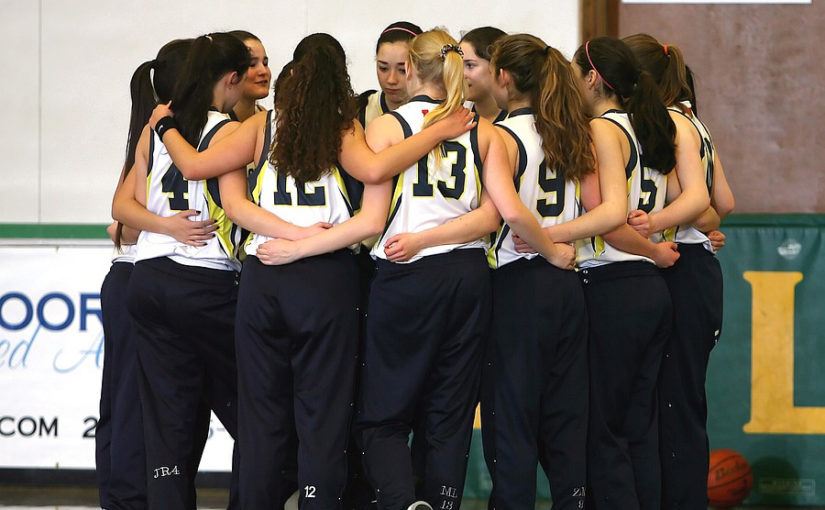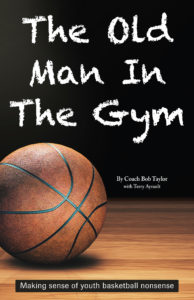Compiling the perfect highlight résumé for athletes
A student athlete’s highlight film is akin to a professional résumé and requires a similar amount of preparation and revision before submission. Comparing the relative few numbers of college scholarships available to the hundreds of thousands of high school student-athletes should magnify just how important your submission materials become.
All head coaches and athletic administrators have made a hire before. Think of how tedious it is to go through hundreds of resumes to find five candidates you would like to interview. Some resumes are briefly reviewed, some are merely glanced at and some never meet with a decision-maker’s eyes.
 Unsolicited emails with highlight links are the same way. Football coaches receive unsolicited emails with links to game film in staggering numbers.
Unsolicited emails with highlight links are the same way. Football coaches receive unsolicited emails with links to game film in staggering numbers.
“I was getting more than 200 emails a day when I was at Portland State,” said Mike Scheper, defensive line coach with the Winnipeg Blue Bombers of the Canadian Football League. “It’s an impossible amount of highlights to get through.”
For coaches who are helping a student-athlete prepare a highlight video, here are seven tips that should improve your response rate.
1. Be realistic.
Understand to which level your athlete projects and proceed accordingly. If they are not hearing from schools in the power conferences by their junior year, it’s extremely unlikely they will get an offer from one of those schools.
“I’ve seen some seriously bad film,” said Dave Hoover, head coach at Victor Valley College and former offensive line coach at UNLV. “I had athletic directors send me clips of a prospect that they absolutely swore by. Then when I look at the film the kid is an absolute Greek tragedy.”
Make sure your prospects are aware of all their options at all levels, not just the schools that play on major networks. NCAA divisions II and III, NAIA, and junior colleges provide great opportunities for students to get an education and continue playing. And the smaller schools are typically more accessible, increasing the chances you will get a reply.
2. Properly target.
Sending tape out to every school in America is not productive and wastes a lot of people’s time, including your own. It’s helpful to start with schools that are in your area.
“I always start with the film from in-state players” said Travis Baker, defensive line coach at Northern Arizona University. “I get between 50 and 80 emails a day from all over the country, but I put a huge emphasis on in-state guys. We want to see all the Arizona kids. After that, it comes down to our need areas and the credibility of the coach sending the film.”
Another useful tip is to personalize the letter to the specific school and coach. Instead of sending a blanket email to 100 coaches with a generic “to whom it may concern” greeting, take the time to research the position coach’s name for the school you are targeting and address him personally in the email, making sure to spell the coach’s name correctly.
3. Subject line.
Instead of 14 exclamation points, 13 asterisks and clichéd declarations such as “must see” or “can’t miss,” it’s best to be straightforward in the subject line. Include the athlete’s name, position, height, weight, high school and state. If the school has higher academic standards like Kalamazoo College (Michigan) include your GPA and test scores in the subject line.
“We are pretty selective and require a minimum GPA of 3.4 with an ACT score of 24” said Cliff Price, assistant football coach at Kalamazoo College. “Including academic information is very helpful, plus it shows me that the prospect has done some research on our school and understands how academically challenging we are. Kalamazoo College alumni will be going professional in something other than sports.”
4. Introductory paragraph.
In regards to the introduction in a prospect’s email, remember the sheer volume of emails coaches get each day. A coach isn’t going to read through a 900-word dissertation about an athlete’s life including the time he was MVP of his third-grade flag football team. In fact, anything more than three or four sentences is superfluous and most likely will not get read.
Include pertinent information such as relevant accomplishments, academics and any other scholarship offers.
“Bullet points are great in the body of the email,” said Coach Scheper. “Just like on a resume, have a list of accomplishments from biggest to smallest with very brief descriptions. I should be able to glance at the email and get the gist of it in a few seconds.”
As with the subject line, avoid clichés in your introduction, like “I give 110 percent” or “you won’t regret it.” Generalities such as “hard worker” or “team player” are also unnecessary. Stick with pertinent information and avoid baseless claims. Allow the highlights to speak to the athlete’s abilities.
5. Proper grammar and punctuation.
As mentioned before, the highlights and the accompanying email is the athlete’s resume. Just like you wouldn’t send a resume to a perspective employer with grammatical errors, neither should an athlete send an email to a coach with mistakes and colloquialisms.
Common words and phrases that athlete’s should avoid in their introductory paragraph include slang and any other sports/street vernacular. Using proper punctuation and grammar lets a coach know that the prospect put time and effort into the email.
6. Music.
If there is background music in the highlight video, be sure there is no offensive language. While this may seem obvious, as many as one in 10 films submitted have highly objectionable language in the music.
“If I’m watching a student-athlete’s highlights and I catch a few ‘f-bombs’ in the music, that is pretty much the end of the recruiting process for that prospect,” said Price. “That’s not how we want our college represented.”
Some coaches like Garett Tujague, offensive line coach at Brigham Young University, prefer no music at all.
“Remember this video is your resume, not a video to show your boys or impress your girlfriend,” he said. “Keep it professional, and make a positive impression.”
7. Highlights.
This may seem obvious, but put the plays that reveal the most about the student-athlete’s skills first. It’s possible that as few as five plays on the film will be watched, so make sure they are ordered correctly.
“I’m getting between 200 and 250 highlight films a day,” said Hoover. “A kid has about five plays to intrigue me. If he isn’t absolute nails, then it’s on to the next one.”
On the topic of “best plays,” please note that what a coach considers a best play is often very different from what the athlete considers his best plays. Touchdowns and sacks are great, but if the clip doesn’t differentiate the athlete from every other athlete at his position, it is not useful.
For example, instead of watching a defensive lineman sprint unblocked and sack the quarterback from the blindside — a play almost any defensive player in America could make — most coaches would rather see a tough battle between that defensive lineman and the best offensive lineman he faced that season.
It’s also important to tailor the highlights to the school you are sending the film to.
“If the school you are sending film to runs the ball more, start your highlights with your run blocking skills on offense or your tackling skills on defense versus heavy 21 personnel sets,” said Tujague. “If you are sending film to a team that throws the ball, then start with your pass pro or route and catching skills on offense or pass breakups and interceptions on defense. Pick your top plays and put them in order from best to good.”
With the rapid growth in recruiting and technology it’s easier than ever to get a prospect’s highlights film in front of college coaches. Transversely, college coaches are receiving more unsolicited highlights than ever before.
By understanding what it takes to get your resume in front of the coaches who evaluate film, your prospects should have a considerably better chance of getting noticed.
Charles Welde is part of the football coaching staff at Victor Valley College in Victorville, California.












